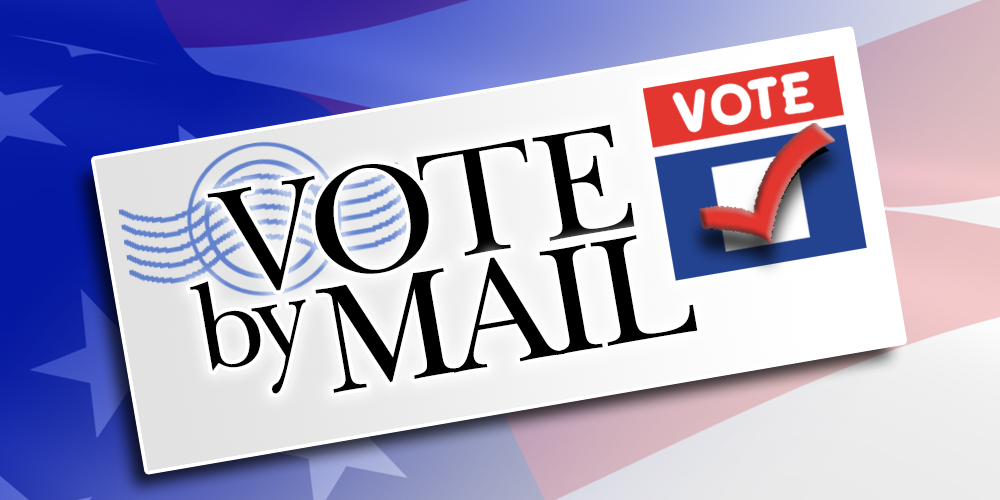Let’s be clear, I very much support expanded access to vote by mail. I support the ongoing TDP lawsuit to force expanded vote by mail, and I would very much advise anyone who is at risk for COVID-19 to apply for a mail ballot. I believe allowing no-excuse vote by mail should be universal, along with a bunch of other voting rights reforms. But we need to recognize that if we do get expanded vote by mail for this year, it’s going to fit within the existing system we have now, not one that has been prepared for it in advance. There are real risks to large-scale expansion of vote by mail, and as is always the case, they fall disproportionately on minority voters.
As election officials scramble to expand their absentee programs, voter advocates are pressing them to preserve adequate in-person voting options, pointing specifically to the obstacles faced by voters of color. They are also noting the ways that vote-by-mail systems — particularly, if implemented sloppily — tend to disenfranchise minority voters at a higher rate than white ones.
Their concerns have already been borne out in the few states that have large-scale mail-in voting programs; in many of them, minority voters’ use of the options lags behind that of white voters.
“From our experience of doing voter engagement, one of the things is that there is confusion,” said Adrianne Shropshire, the executive director of BlackPAC, which mobilizes black voting around key races.
Her group recently surveyed registered black voters in swing states and found that 4-in-10 had concerns about voting by mail, a process only 36 percent had experience with. Even with the ongoing pandemic, voting-in-person was about tied with vote-by-mail when the survey-takers were asked their preferred method for November’s election.
“In some ways there’s an instinct that you have about the challenges that make them suspicious or concerned even if they don’t know the specifics,” Shropshire said. “On the reality side, we already know the challenges that black voters face when they vote by mail.”
The potential for racial disparities in how vote-by-mail systems are implemented has already become a flashpoint in upcoming primaries in Ohio, Nevada and Georgia.
Some of the resistance to absentee voting can be chalked up to historical or cultural trends, experts say, such as the longstanding “Souls to the Polls” practice of black church-goers traveling to polling places after Sunday services.
“Early voting has been really, really important for African American communities in encouraging voter participation,” said Danielle Root, an expert at the Center For American Progress who worked on a recent CAP-NAACP paper on the need for in-person voting during the pandemic. “So eliminating all in-person options obviously negatively impacts African American voters in that way.”
There are other systemic issues at play as well. African Americans change addresses more frequently, and they make up a disproportionate percentage of the homeless population. Transience can make participating in vote-by-mail elections challenging.
Given the unreliable nature of postal service on tribal lands, certain mail-in voting policies present unique challenges for Native American communities.
In-person voting is also needed for non-English speaking voters and for voters with disabilities, advocates say.
Pointing to these populations, voter advocates have criticized — and in some places, sued — election officials who have sought to all but eliminate in-person voting during the pandemic, as they have expanded absentee voting opportunities.
“For communities — and this is true for African American voters — that have higher rates of moving and lower rates of voter-by-mail usage, [election officials] need to be figuring out how to reach voters, and not looking for ways to, frankly, cut corners and in turn cut people out of the process,” said Hannah Fried, the national campaign director of the advocacy group All Voting Is Local.
There’s more, and you should read the rest. We have talked about some of these concerns, but this article goes into a lot more detail, and it addresses concerns I had not previously considered.
There are three basic takeaways here. One is that the goal here is to make voting easier for everyone, and that means giving them the best way for them to vote, whether it’s mail or in person. Two, focusing on safety and risk mitigation means considering all reasonable options to make in person voting safer as well – more locations, hand sanitizer and wipes everywhere, getting as many poll workers in place and trained as possible, etc. We can’t afford to be too focused on one method of voting at the expense of others. And three, we need to really listen to the voters who always face the hardest challenges to voting and take their feedback seriously. I’m going to be fine whatever we wind up doing. Lots of people are not in that same position. We need to accommodate those voters before we worry about voters like me.

